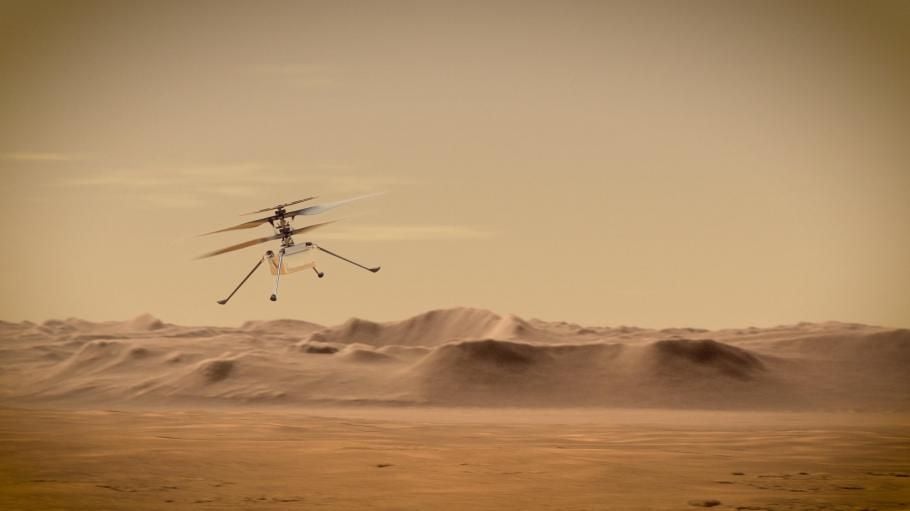The Wright Moment: Ingenuity Prepares for Flight
Ingenuity, the small, four-pound autonomous aircraft, will attempt the biggest of feats. The Wright brothers lifted their 1903 Wright Flyer off the ground over a century ago, and now the Mars helicopter will attempt the same. Ginny took off from the surface of the Red Planet on Monday, April 19.
:focal(455x256:456x257)/https://tf-cmsv2-smithsonianmag-media.s3.amazonaws.com/blogging/featured/EyWM7t6WQAAl1Rd_1.jpg)
Ginny
Now that the Mars 2020 mission has successfully begun its exploration of the Red Planet and the Perseverance rover has settled into its new home, NASA aims to take things to new heights—literally. Percy, a nickname for the rover that has since stuck, did not make the interplanetary journey alone, as she carried with her a tiny companion with a game-changing dream: a four pound autonomous helicopter that goes by the name Ingenuity, or Ginny (another nickname, of course).
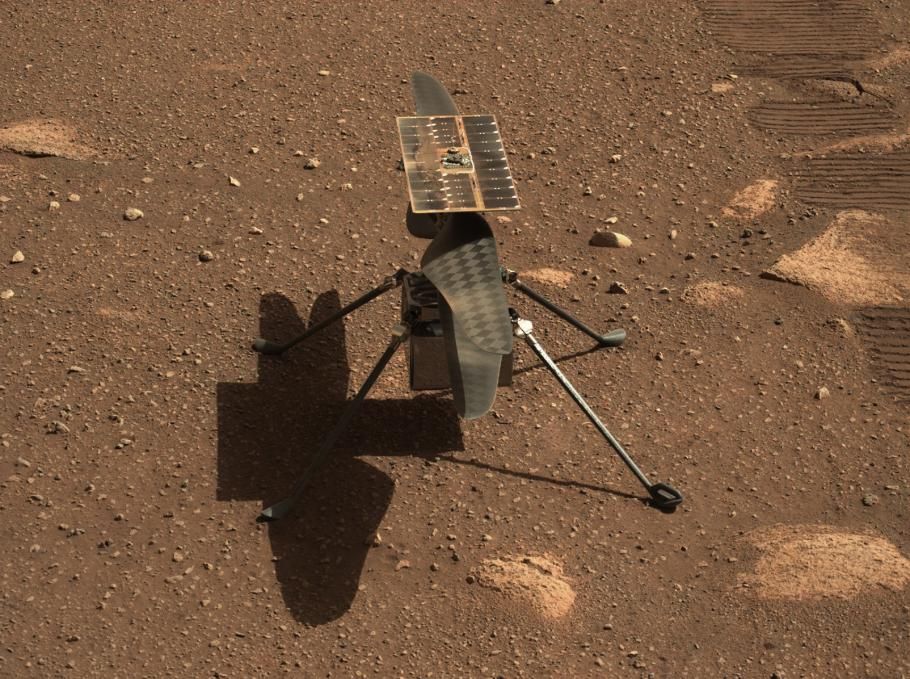
Ginny arrived on the Red Planet fastened at the bottom of Perseverance on February 18, 2021, and recently tested her legs after detaching from the rover, touching the surface of Mars for the first time. Yet sticking to the surface is not the primary focus of the tiny flyer, as she has ambitions of taking flight—the first attempt of powered, controlled flight on another planet, to be specific. Although here on Earth flights are backed by the assurance of over a century of flying experience, Ginny’s task is, well, out-of-this-world. While Mars has lower gravity at about one-third that of Earth, its atmosphere is only one percent as dense, which makes the helicopter’s task of getting off the ground much more difficult than it would be here on our home turf.
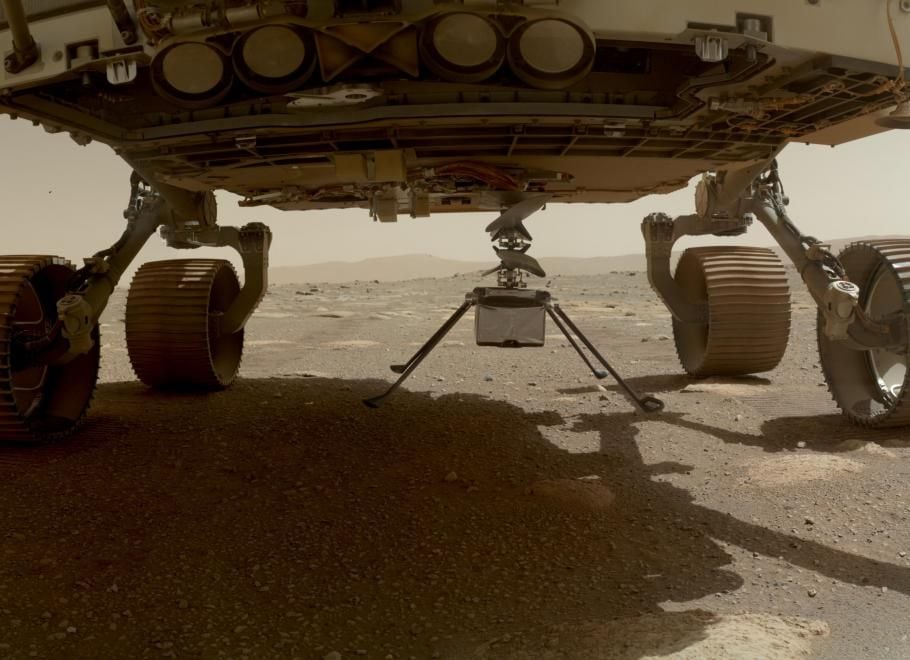
First Flight
Whether Ingenuity can successfully lift off and land will not affect the overall mission that sent Perseverance to Jezero Crater in search of ancient life, as the takeoff was never intended to be a primary objective, but as an experiment that NASA labels as a technology demonstration. Although the outcome of Ginny’s flight attempt is independent of the rover’s science mission, it carries major implications, opening a world of possibilities and a plethora of questions: Is there a future for flying on Martian air? Will the next rover to land on Mars have the ability of flight? Can aircraft become an integral part of exploration missions? Ginny may not provide all the answers, but if she is successful in her attempt, we may be one step closer to them.
Is flight on Mars possible? The answer to that question is perhaps the one we long for above all. Ingenuity may allow to us relish in a moment none of us were likely alive to experience: the possibility of first flight. That’s the question that the Wright brothers perhaps pondered repeatedly with each new idea and every slogged attempt to create the first airplane. The striking parallels between these two first flights are undeniable. We know flight is possible and we know the extraordinary places it can take us. Yet, before the Wright brothers lifted their 1903 Flyer off the ground, there was uncertainty, as there is now with Ginny on Mars.
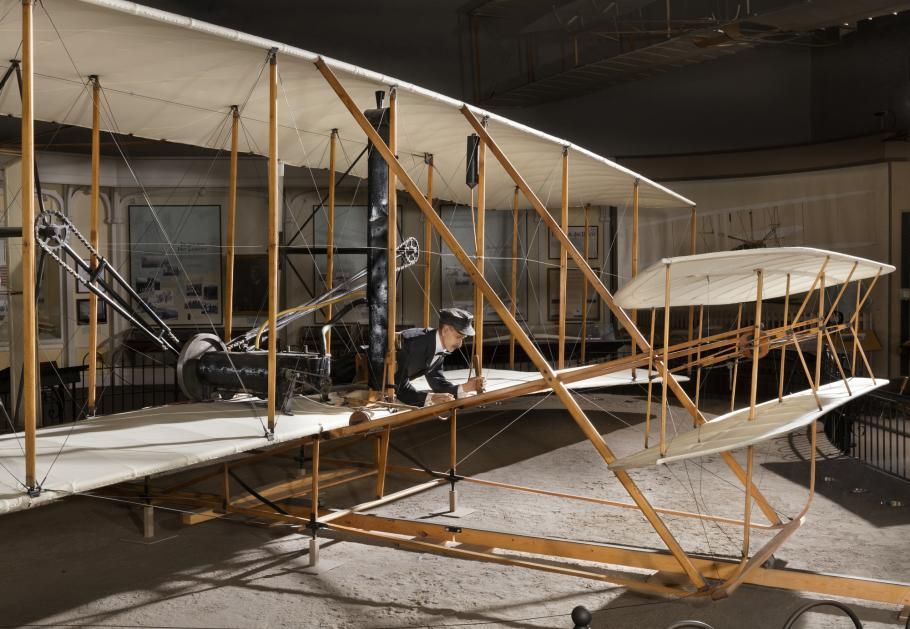
When the 1903 Wright Flyer took off and Orville Wright felt the ground beneath his feet become weightless for those 12 seconds that changed the world, the possibilities of what could come next instantly became infinite. Ginny’s first attempt will also only last seconds—approximately 20 to 30 if all goes well—but for many of us, it may permit a matching experience to the moment news of controlled flight proliferated worldwide, right here on Earth. The Mars flyer is a Wright moment for a new century, and in the ultimate nod to that very first flight, Ginny carries a piece of fabric from the Wright Flyer with her— a relic from the past that will journey with her on the adventures that unfold.
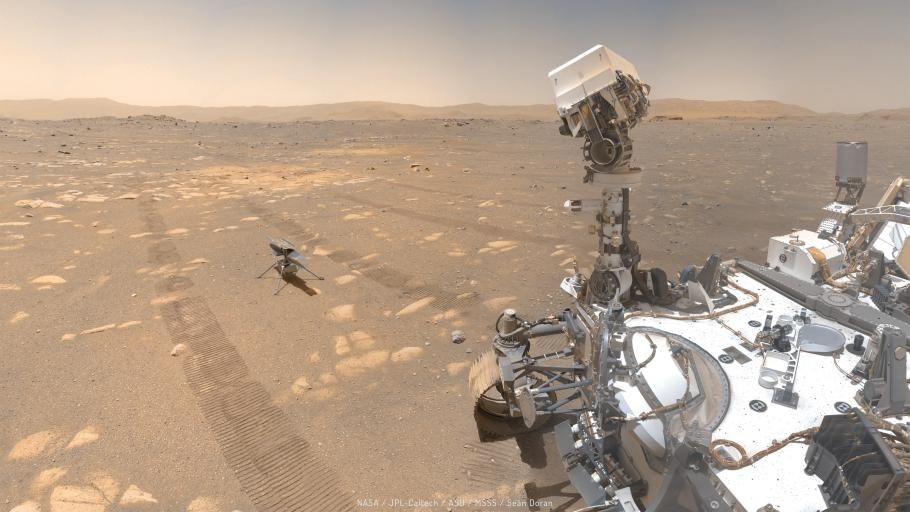
What to Expect
NASA has laid out a plan of how Ginny’s unprecedented attempt will unfold. Here’s the breakdown of what to expect and what comes next:
- “A date for the first attempt was recently rescheduled to no earlier than April 14, 2021 and can change at the engineers’ discretion.”
- “Livestreams to announce the outcome of the flight and the postflight briefing are expected, with a date and time to be determined.”
- After receiving commands from Earth relayed through the rover, Ginny will operate autonomously.
- The Mars helicopter will take off only a few feet from the ground and hover for approximately 20 to 30 seconds before landing.
- Once safely back on the ground, Ginny will use solar power to charge her batteries for future test flights during a 31 Earth-day period.
- With two cameras equipped, Ginny is expected to take pictures during future flights.
- Onboard computers and navigation sensors will allow the helicopter to eventually attempt further distances and higher altitude.
